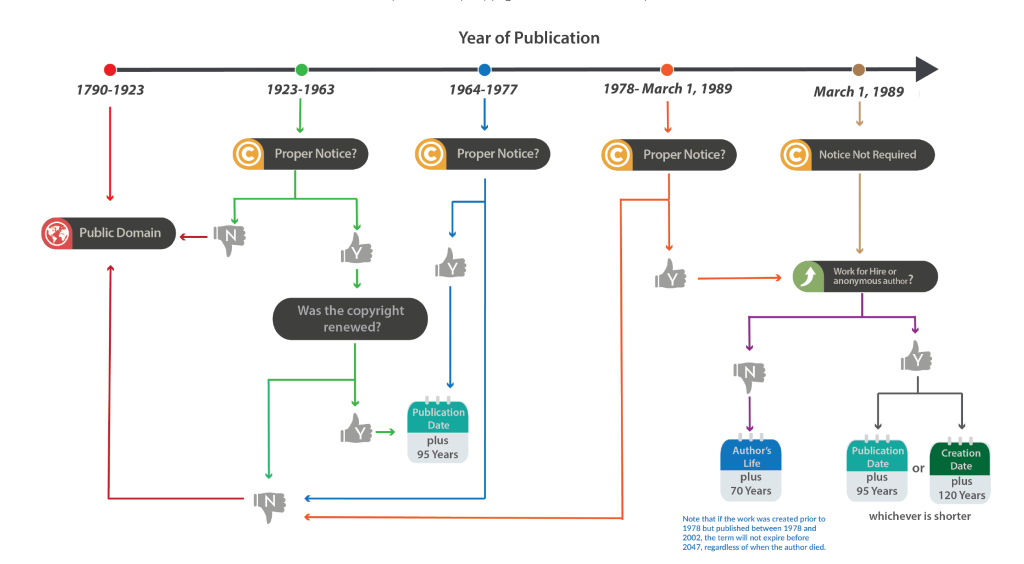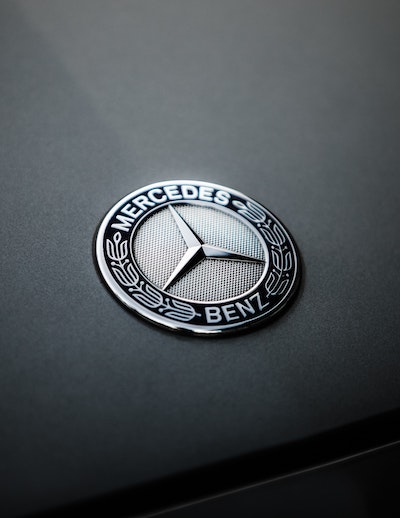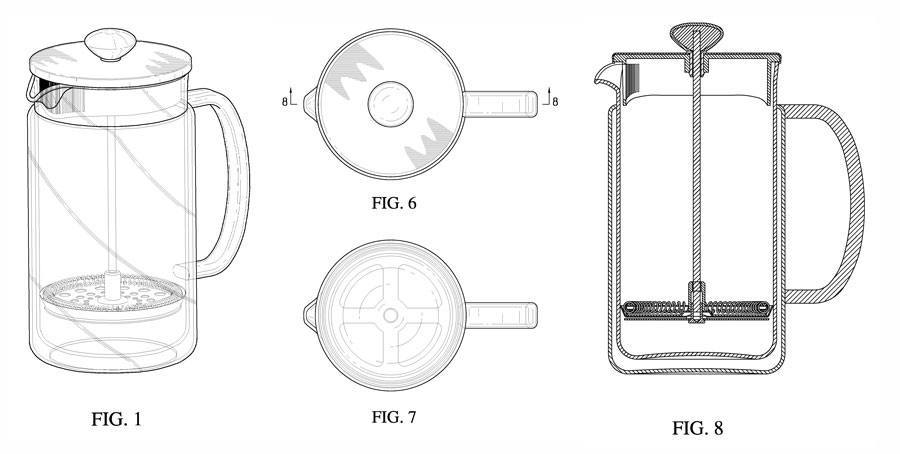When people find out that I am an Intellectual Property (IP) attorney, I am often battered with questions about the topic. That’s understandable. Few people would want something that they put their heart and soul into creating, whether that’s art, music, design, or an invention, being used or sold without their permission.
Unfortunately, IP law has gotten so complicated that many people aren’t even sure which types of IP (copyright, trademarks, or patents) protects their creative work. Take these two commonly heard phrases:
“I need to copyright my company name,” and “I want to patent my new idea.”
If I had to guess, I would estimate that at least half of the people reading this article don’t know why those two statements are wrong. (We’ll get back to these statements later.)
The result is that Intellectual Property is often left unprotected or undefended. Fortunately, you don’t need to grasp all the complexities of Intellectual Property law to protect your creative work. With just a basic understanding of each type of Intellectual Property, you’ll be able to determine whether your work can be protected and what you should do to make it happen.
Which Types of IP Law Is Right for You?
At a fundamental level, each type of Intellectual Property focuses on a different creative work: copyright protects visual art and writings, trademark protects the names, symbols, or slogans for products or services, and patent protects inventions. With that basic structure, let’s review them and sort out some of the confusing aspects of each.
Copyright
Copyright is the type of IP most often associated with artistic works like fine art, movies, or books. Copyright only protects:
original works of authorship fixed in a tangible medium.
A tangible medium is something physical, like paper, film, a camera sensor, or computer memory. Original works that aren’t fixed in a tangible medium, such as dance moves, are not copyrightable. However, a film of the dance moves, or drawings and descriptions of them would be copyrightable.
More importantly, because the work must be tangible, that also means that an idea can’t be copyrighted, only the execution of that idea. For example, anybody can publish a book about three teenagers who solve magical mysteries at a wizarding school. That’s an idea for a story. But, if the author writes a book where one of those kids is named Harry and has a scar on his head from the villain that tried to kill him as a baby, that author will probably receive a copyright infringement letter in the near future.
How do I get a Copyright?
As soon as the creative idea is made tangible, it is automatically protected. Even a simple drawing on a napkin will be protected. You don’t need to register the work like you would with trademarks or patents.
However, the Supreme Court has also stated that to have copyright protection, there must be a “modicum of creativity,” so if the drawing were a stick figure that has been done thousands of times by children across the world, the drawing wouldn’t be creative enough to warrant copyright protection.
The same is true of titles, slogans, short phrases, names, headlines, facts, or lists. They aren’t deemed to be creative enough. So even a phrase as original as “M&Ms melt in your mouth, not in your hands‚” does not have copyright protection. (Although, it could receive trademark protection.)
Although copyright registration is not required, there are several benefits to doing so. To see more on the benefits of copyright registration, see Stop, Thief! How To Win Big In a Copyright Infringement Case.
Your Copy-Rights
Copyright ownership gives the holder of the copyright six exclusive rights, which means that no person or organization can do any of the following without the copyright holder’s express permission:
- Reproduce and make copies of an original work;
- Prepare derivative works based on the original work;
- Distribute copies to the public by sale or another form of transfer, such as rental or lending;
- Publicly perform the work;
- Publicly display the work, and
- Perform sound recordings publicly through digital audio transmission.
For example, when uploading artwork to Artrepreneur, the artist also gives the company a limited right to copy, display, and distribute digital copies of the artwork as needed to provide the services of the website. Artrepreneur cannot sell or give the image to anyone to sell or use it in a manner that is outside the scope of the site’s features without additional permissions.
Copyright Duration
However, these rights do not last forever. Currently, the copyright duration for an individual is the life of the author plus 70 years, and for companies, it is 95 years from the date of first publication.
This term of copyright duration didn’t start until 1989, when the United States signed the Berne Convention, the international copyright treaty. Any works that received copyright prior to 1989 had different requirements and durations, including having a copyright notice, i.e. © Steve Schlackman (1975).
For those looking to find copyright-free works to use, one rule of thumb is that any work created prior to 1924 no longer has copyright protection (in the public domain). For any works created before 1989 and 1924, use the flowchart below.

For more details on copyright, download our free eBook, The Law of Creativity, using the form in the sidebar.
Trademarks
Trademarks are one of the types of IP that often get confused with copyright. While copyright protects works or art, trademarks protect words, symbols, slogans, or even sounds that identify products or services. The product or service must be used “in commerce” (available for sale). If the product or service is not being used in commerce, it cannot receive a trademark or can lose its trademark protection.
Unlike copyright, trademarks are not automatic and must be registered in each country where you wish to have protection, although there are processes to make registration in multiple countries easier.

Trademark protects words, symbols, and slogans that identify products or services
The owner of a registered trademark can stop others, anywhere in the country of registration, from using the same or similar name, symbol, or slogan for the same type of product or service. They can force the infringing company to change their name, destroy all the products in inventory along with any business materials containing the infringing name, as well as require hefty damage awards payments to the trademark holder by the infringing person or company. The damage award include all the profit that the infringer made from using the trademark as well as other punitive damages. The high penalties also act as a deterrent because a trademark infringement could potentially put the infringing company out of business.
Trademark requirements
Each trademark application must list the goods or services that the trademark is supposed to protect. If the trademark is approved, the trademark will provide an exclusive right to use those words for the class of goods or services listed.
The mark must also be distinctive, so it cannot be too similar to a mark already in use. The idea isn’t just to protect the owner of the trademark but also to protect potential buyers from purchasing a product from one brand, thinking it is actually a different brand because the name is so similar. The legal term is “likelihood of confusion.”
Let’s use an example to illustrate.
Let’s say that Alligator is a company that produces high-end men’s shirts. They can register the trademark for Alligator with the listed goods and services as “shirts.” Anyone who then tries to use the name Alligator for their shirt brand would be infringing the trademark.
Not only do we want to protect customers from confusing one product with another, but it also isn’t fair that some other company gets the benefit of Alligator’s reputation and goodwill that they spent years and resources building.
On the other hand, if Alligator were the name of a bicycle company, that would be fine since shirts and bicycles are unrelated products and customers are unlikely to think that they are the same company.
Trademarks also cannot use descriptive or generic words because the trademark would provide exclusive rights to use those words. Imagine if someone trademarked “Camera Shop.” If that were approved, then the owner could stop any camera shop from using the term “camera shop” to describe their store.
Trademark Registration
Trademark registration can be complex, and while you can do it yourself using several online services, we recommend using a trademark attorney that can write the goods and services in a way that will avoid conflict with other trademarks and give you the greatest opportunity for approval.
You don’t want to spend money on marketing and development only to find later that you did not receive trademark approval or received a cease and desist from another company because you were infringing on their trademark and didn’t know it. Given the investment required to bring a company or product to market, it is well worth having a trademark attorney handle the application.
If the trademark isn’t registered, or if a person or company has applied for registration, but it has not yet been approved, the owner can use ™ with the name, symbol, or slogan whenever it is publicly displayed. ™ is similar to marking your territory. It does not provide protection in and of itself, but if another company in the geographic area uses the same name, and you believe that your customers are being confused, you can initiate legal action to stop the infringing use under state law. Having used the ™ shows the court that you not only had the name first but claimed it locally. However, if a mark is federally registered, it applies to the entire country and can use the ® symbol if desired. It is not required.
Finally, trademarks last forever, as long as you are using them “in commerce.” Every five years a trademark holder must show that the product or service is being used and pay a maintenance fee, or they will lose their trademark
Utility and Design Patents
Patents are one of the most confusing types of IP law, and justifiably so. It is so complex that patent applications can only be submitted by a registered Patent Attorney. Plus, only a small percentage of applications will receive a patent, which often takes years and significant investment to acquire.
There are two types of patents. Utility patents cover the way an invention works, while design patents cover the way an invention looks. And, just like copyright and trademark, patents provide the exclusive rights to decide how, when, where, and who can use your invention. Utility patents last for 20 years, and design patents last for 15 years from the date the application is submitted, although there are maintenance fees required every five years to keep the patent in force.
Utility Patents
Utility patents are issued for “any new and useful process, machine, article of manufacture, or composition of matter, or any new and useful improvement thereof” (35 U.S.C. §101). They are functional items that are unique and have never been invented before. They don’t even have to have ever been made. If someone wrote about how to make the invention before you did, even if it was in a college thesis that is sitting on a university library shelf that few people ever look at, you cannot patent the invention.
Visual artists or members of the visual art community may create new and useful inventions, not even realizing that they may be patentable. Artists often design new methods for crafting artistic works or experiment with new formulations and materials.
However, to be patentable, the invention must produce a “useful, concrete, and tangible result.” For a method or process to be patentable, it must accomplish some practical application. If an artist creates a method for applying certain types of pigments to an outdoor wall, it must have a benefit, such as increased tonal range or decreased fading in strong sun, or some other benefit that is concrete and tangible.
Design patents
Design patents cover ornamental designs. The design cannot have any functional aspect. Like utility patents, the patentable design must be new and unique. Nobody can ever have created that design anywhere in the world, and it also cannot be an obvious design, as if it were the direct result of the functionality of the product.
Take a look at the Bodum French Press patent drawings below. Any French Press must be open at the top and have a plunger, so that aspect of the design isn’t patentable, but the use of glass and both the material used, the location and pattern of the metal bands are protectable. Those designs are unique to the Bodum.

Bodum French Press Design Patent
One important consideration: If you publicly disclose the subject of your design or utility patent prior to submitting the patent application, it will not be patentable anywhere in the world except in the United States, which allows a one-year window from public disclosure to application submission.
______
Most of the Intellectual Property in the art world will surround copyright. Trademarks come in a distant second, while patents will be a small minority. Certainly, companies that manufacture goods, like Canon and Nikon, or smaller companies such as Red River paper all have patents in their Intellectual Property portfolios, but the majority of service businesses like photographers, writers, and artists won’t have much use for patents.
Whatever you are creating, it pays to think about the best types of IP to protect those works. If you don’t, you may find an individual or company infringing on your Intellectual property without much opportunity to stop them.
Now, given what you have read, let’s once again take a look at the two statements I mentioned earlier: “I need to copyright my slogan” and “I want to patent my new idea.” Do you see why they are wrong?
We know this is a difficult topic so if you have any questions, please leave them in the comments below.
